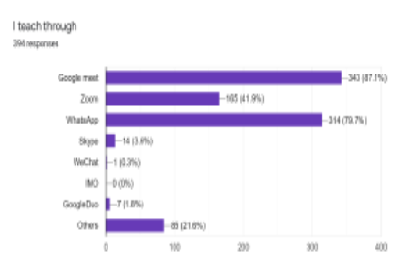


Indian Journal of Science and Technology
Year: 2023, Volume: 16, Issue: 8, Pages: 583-589
Original Article
K K Soman1*, P Srinivasan2, Aswathi Prasad3, Vishnu Achutha Menon4
1Research Scholar, Department of Education, School of Education & Training, Central University of Tamil Nadu, Thiruvarur, Tamil Nadu
2Professor & Head, Department of Education, School of Education & Training, Central University of Tamil Nadu, Thiruvarur, Tamil Nadu
3Fuctional Specialist, Centre of Excellence for Psychology, Niyama.ai
4Assistant Professor, Department of Media Studies, Kristu Jayanti College (Autonomous), Narayanapura, Bangalore
*Corresponding Author
Email: [email protected]
Received Date:11 October 2022, Accepted Date:25 December 2022, Published Date:02 March 2023
Objective: The present study applies the Unified Theory of Acceptance and Use of Technology to assess the user intentions and subsequent use of digital media among high school teachers to provide inclusive education in Kerala during the COVID-19 pandemic. Methods: An online survey was conducted using purposive sampling; 394 responses were collected from high school teachers at various levels and age groups, who were mostly reported to be utilizing Google Meet, WhatsApp, Zoom, and Skype for teaching. As the data were not normally distributed, non-parametric tests, including the Mann- Whitney U test and Kruskal-Wallis H test, were performed to investigate the extent of digital media use among high school teachers across categories of gender, age, type of school, average monthly income, locality, and relationship status. Spearman’s Rank Order correlation coefficient was calculated to examine the relationship between various components of digital media use among the participants. Findings: The study explored that most teachers are using digital platforms extensively for online teaching, depending on the available digital facilities and digital literacy of the teachers and the students and the availability of IT support from the schools. Descriptive measures demonstrated that the most commonly used digital media app among high school teachers is Google meet (87.1%) followed by WhatsApp (79.7%). Pairwise comparisons significantly higher PE, EE, UB, SI, FC, and total technology use among participants below 39 years (p<.01). Government school teachers were found to have higher scores for UTAUT variables; except for BI, which was higher among unaided school teachers (p<.01). Engaged participants were found to have higher UB and total digital use when compared to married and single participants (p<.01). Spearman’s rank-order correlation suggesteda significant positive correlation amongst the UTAUT variables; total digital use was positively correlated with all the components (p<.01). Novelty: The study has incorporated the Unified Theory of Acceptance (UTAUT) in an attempt to uncover the role of digital media in facilitating inclusive education during the covid-19 pandemic. Both descriptive and inferential statistical measures are employed to provide an objective stance on the education trends and educator practices brought in by the ‘new normal.’
Keywords: COVID19; High School Teachers; Inclusive Education; Unified Theory of Acceptance and Use of Technology (UTAUT); Digital Media
© 2023 Soman et al.This is an open-access article distributed under the terms of the Creative Commons Attribution License, which permits unrestricted use, distribution, and reproduction in any medium, provided the original author and source are credited. Published By Indian Society for Education and Environment (iSee)
Subscribe now for latest articles and news.